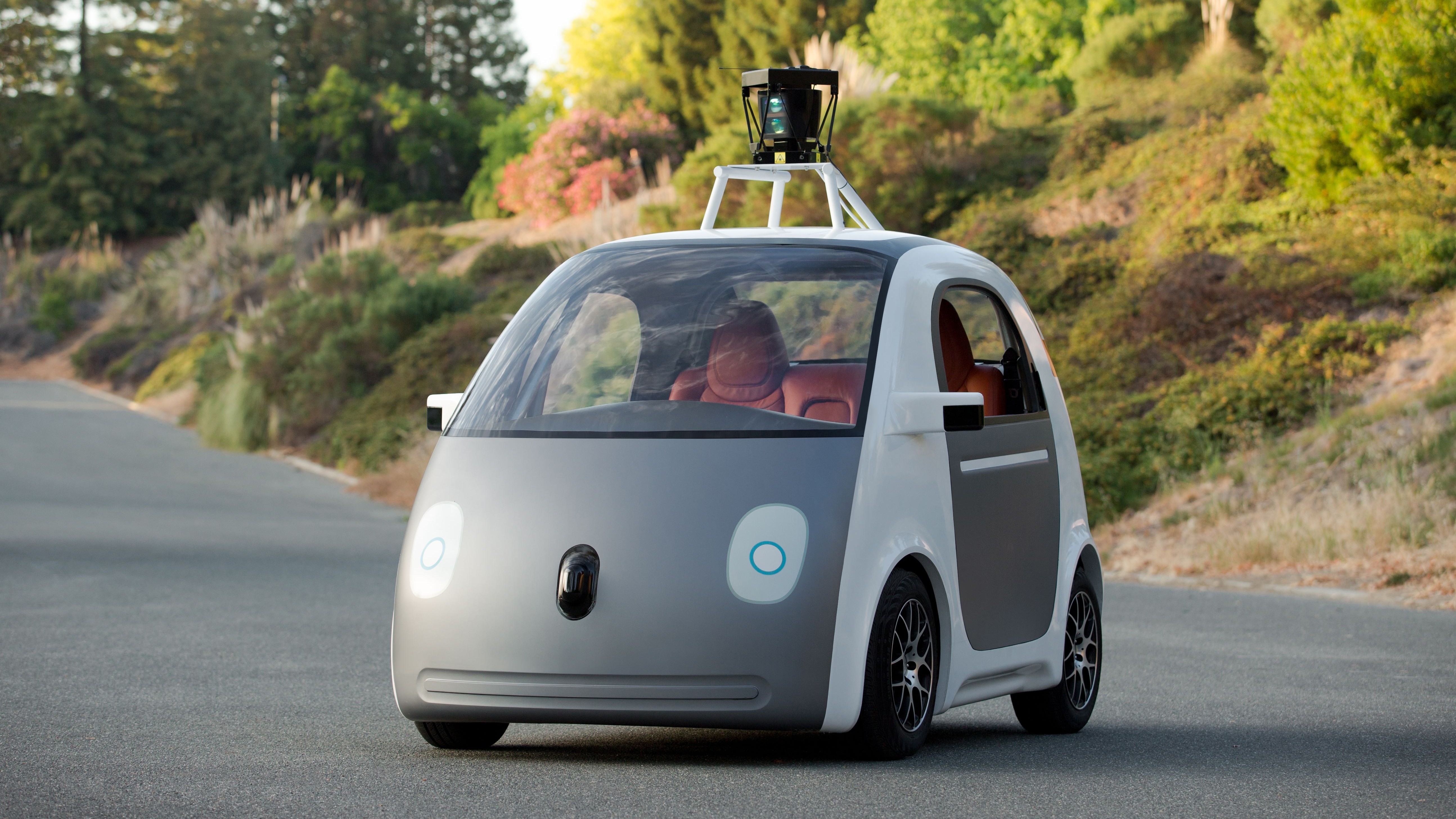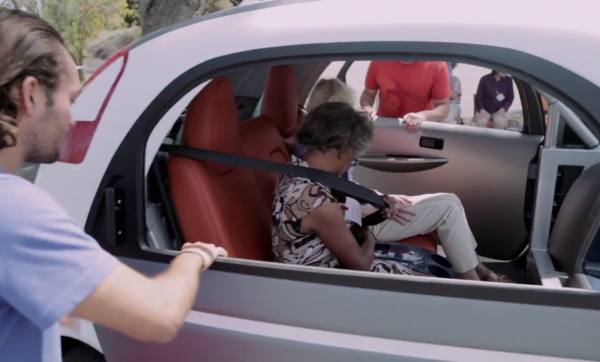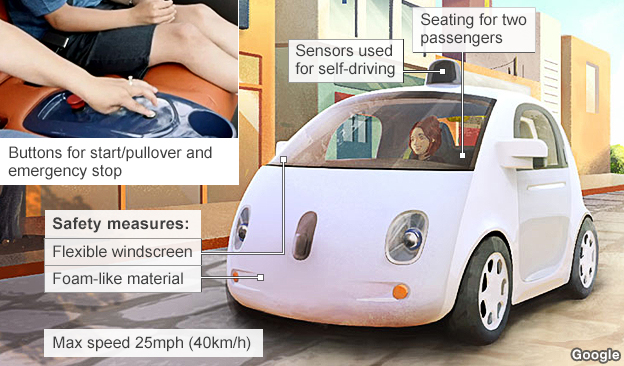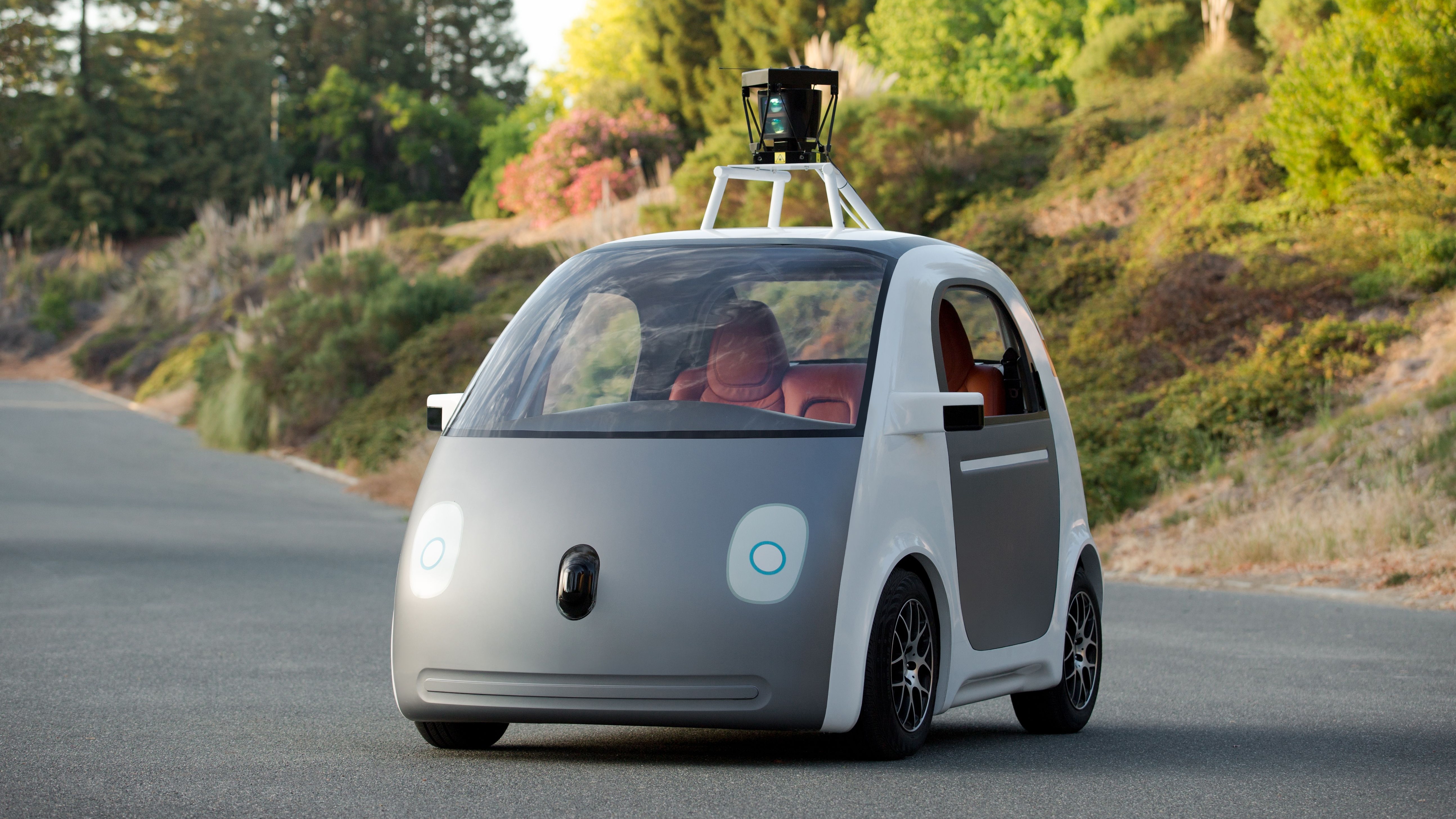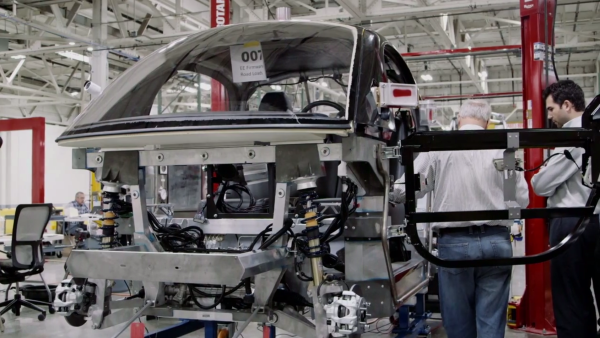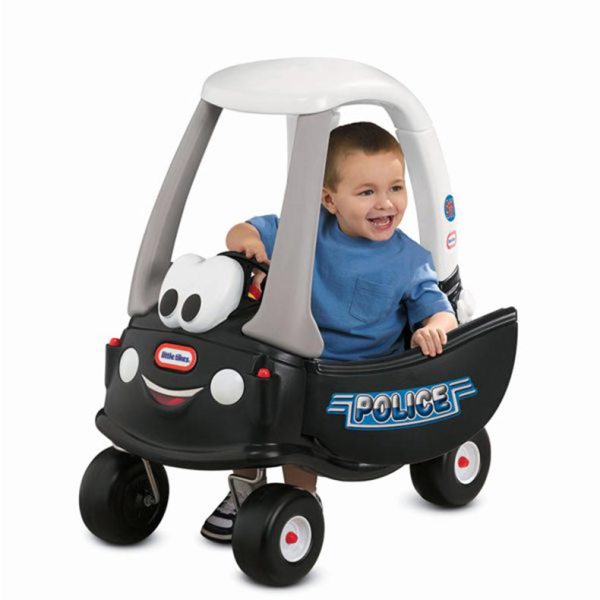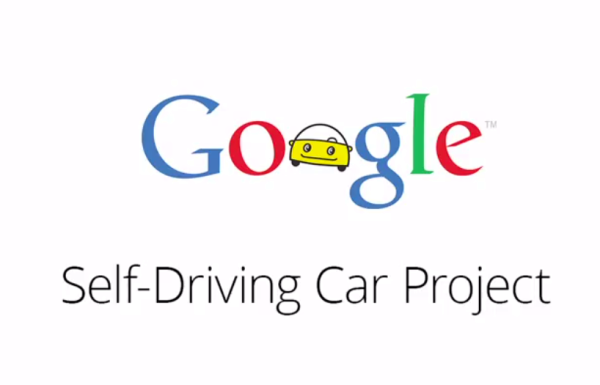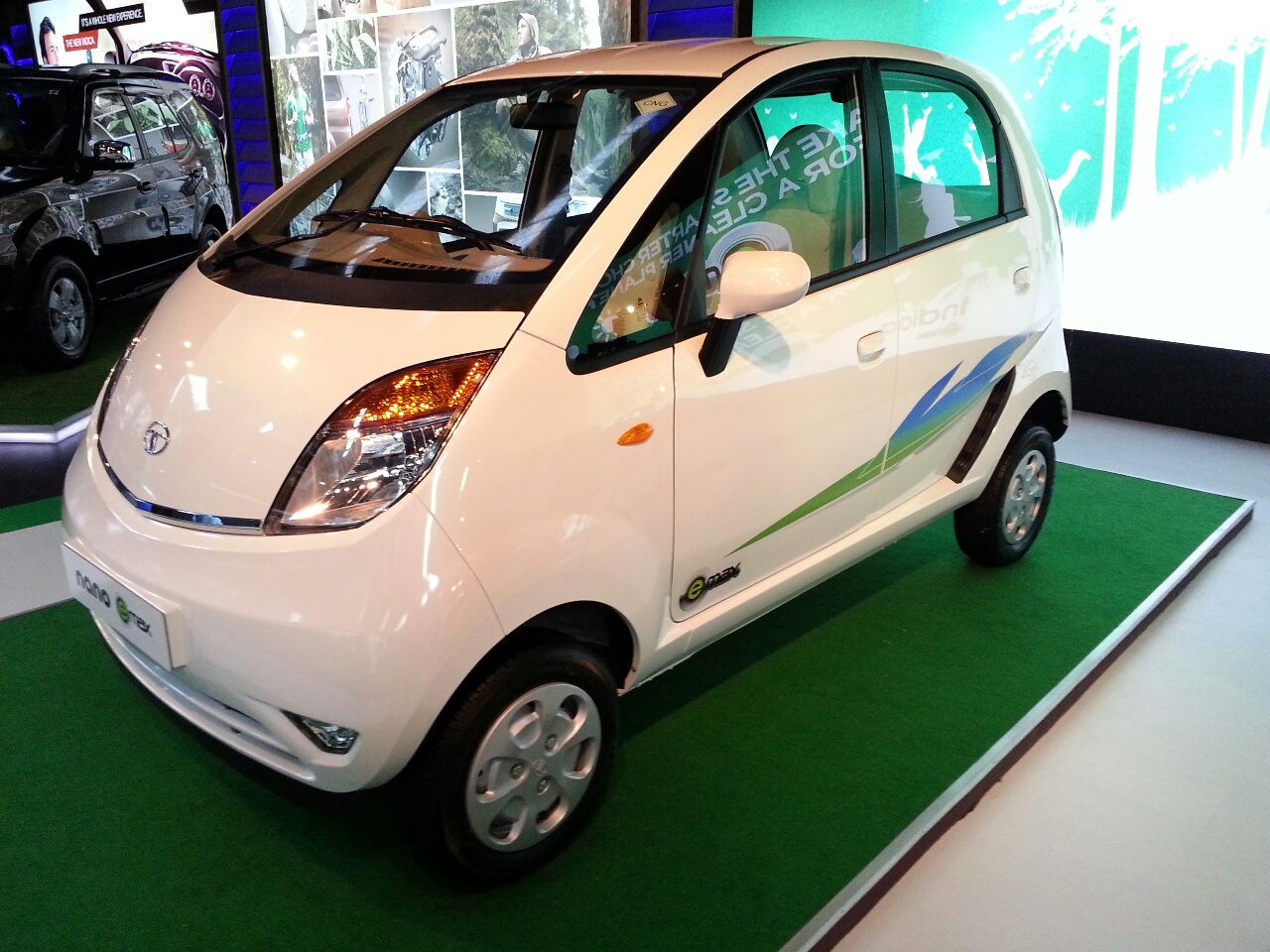Google's New Self-Driving Car Has Been Designed To Look Like It’s Happy To See You
It has no brakes, no steering wheel, no gas pedal. Just two buttons for "go" and "stop," and a mobile app to summon the car.
For the first time ever, Google has built a self-driving car from scratch, a vehicle that has no steering wheel or accelerator or even brake pedals
Google has been building self-driving cars for years, but what we've seen so far has always been retrofits of existing cars — until now. The search giant unveiled on Tuesday a fully autonomous self-driving car, built from the ground up by Google and its partners.
There’s no steering wheel, pedals, or gear shift. Instead, the cars have two sets of mechanical controls so they have a backup if one fails.
Image via wordpress.comCompany co-founder Sergey Brin revealed his plans at Recode's Code Conference in southern California. Instead of the car controls indispensable to today's drivers, Google's prototype relies on built-in sensors and a software system to safely maneuver the vehicle. "We took a look from the ground up of what a self-driving car would look like," Brin said.
cnet.comBecause the Google car doesn't have a steering wheel, accelerator or brakes, it has more sensors in strategic spots than is possible in a regular car. It's also equipped with a big "stop" button.
In addition to all this tech, Google's autonomous car includes internal power steering and power brakes. The goal of the project is for self-driving cars to be "significantly" safer than human-driven cars in a few years, Brin said. He said that that the project has experienced no crashes during testing, but the cars only operate at speeds of around 25 miles per hour, which gives them more time to react to obstacles.
"It was inspiring to start with a blank sheet of paper and ask, 'What should be different about this kind of vehicle?'" Chris Urmson, director of the Self-Driving Car Project, wrote in a blog post about the new car.
Google's self-driving car is an ambitious project that hopes to end human error behind the wheel with a very Google-y solution: software
The tech titan's robo-cars have logged more than 700,000 miles since it began working on the vehicles in 2009. Google expects to have them ready for public use between 2017 and 2020.
cnet.comA demonstration earlier this month by Google's Self-Driving Car Project team shows how the vehicle depends on a Google-made topographical map to get a sense of what it should expect. The map includes the height of the traffic signals above the street, the placement of stop signs and crosswalks, the depth of the sidewalk curb, the width of the lanes, and can differentiate lane markings from white and dashed to double-yellow.
The company announced major progress last month in improving how the system responds to objects not on a map. In a YouTube video, the Web giant demonstrated some of the circumstances its self-driving cars now handle, such as bicyclists signaling to move across a lane of traffic, railroad crossings, and parked cars protruding into the lane of traffic.
cnet.comAnd if the tiny car looks like it’s happy to see you, that’s no accident. The self-driving car's front-grill "face" was designed to look like that: friendly.
The cute design minimizes fear about the risks of self-driving vehicles. This way, attention stays squarely on their world-changing potential, notes TechCrunch.
forbes.comWhile Google knows computers better than people, it seems it understands that people might be afraid of its self-driving cars, so rather than showing the mechanical details...
Google has focused on making the car look cute so much so that even the logo has cuteness attached to it
And it seems, Google has taken some inspiration on how it looks, because going by the design and make, it looks a lot like the Tata Nano, a four-door car sold in India
